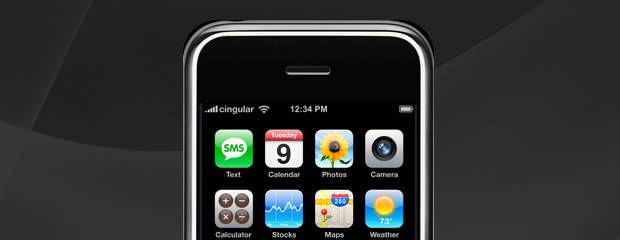
The essential guide
Yet it wasn't all bad. The email service was stable and largely dependable. It synced our contacts, so we didn't need to tap them all in on an iPhone keyboard, and the calendar tool always made sure we turned up just in time, wherever we happened to be.
Apple knew this as so then as anyone, which is why it chose to preserve those parts, jettisoning the web publishing, photo gallery and iDisk, as it set about building iCloud.
Vast data centre in North Carolina
Housed in a vast data centre in North Carolina, iCloud is Apple's at once-generation online service. It syncs your iPhone, iPad, Mac and iPod touch. It can track a lost device, copy your iPhone snaps over the web so they're safely backed up on your Mac, and synchronise your iWork files so that whatever device you're using, downtime is never wasted time.
Whether you're moving an existing MobileMe account to iCloud or setting it up for the first time, Apple has applied its trademark logic to the process to make it as simple as possible.
Capped broadband deal or you don't have broadband
If you're on a capped broadband deal or you don't have broadband, at the time all is not lost. Head for a bricks-and-mortar Apple Store if you have one within reasonable driving distance and download it there using the free Wi-Fi.
One of the most exciting features of iCloud is Photo Stream, which automatically copies the 1,000 photos you've most recently taken over the last 30 days between your iPhone, iPad and iPod touch, as so then as backing them up to any Mac running iPhoto or Aperture.
iCloud has taken over from MobileMe as the main synchronisation conduit for all of your data on Apple's integrated ecosystem. That includes not only your contact, email accounts, calendars in short on, however also your purchases through the iTunes Store, iBook Store and Mac App Store.
That means that any purchase you make on any of your devices, or through iTunes on your Mac, will automatically be synchronised on each of your other devices. This works on your iPhone, iPad and iPod touch as before long as you upgrade to iOS 5 and activate iCloud.
The iPhone 3GS
iCloud is compatible with the iPhone 3GS, 4 and 4S, iPad and iPad 2, and the third- and fourth-generation iPod touch. Each must be running iOS 5 to gain access to options for enabling the integrated iCloud features that sit at the heart of the OS.
The original iPhone and iPod touch only support as far as iPhone OS 3.1.3, and the iPhone 3G and second-generation iPod touch, iOS 4.2.1. If you're updating several identical devices at one time, download the iOS 5 setup files manually so that you don't tie up your internet connection as iTunes retrieves them for each device individually. See here for the direct download links and instructions on how to apply each patch.
Be aware that if you follow this route, the bundles differ according to which device you want to update. So during the OS underpinning your iPad 2, iPhone 4 and iPod touch might all be called iOS 5, they differ sufficiently for you to require a different setup file for each one.
The simplest route to updating your device
The simplest route to updating your device, consequently, is to connect it to your Mac using USB and launch iTunes. iTunes will check Apple's servers for the iOS 5 update and patch your device. Click Download and Update to proceed, having already performed a manual synchronisation to ensure there's an up-to-date backup of your data in place should anything go wrong.
Once you've updated to iOS 5, all future software updates can be performed directly through the phone without plugging it in to your Mac. Tap Settings > General > Software Update to check for new releases.
You'll as well need to update your Apple TV to take advantage of Photo Stream and access your previous iTunes purchases. Do this by using your remote to select Settings > General > Software Update. When Apple TV has located the installer, click Download and Install. When the download completes on Apple TV 2, the update will have been applied. On Apple TV 1, click Update Now. Note that only Apple TV 2 is compatible with iCloud Photo Stream.
- · Rackspace debuts OpenStack cloud servers
- · America's broadband adoption challenges
- · EPAM Systems Leverages the Cloud to Enhance Its Global Delivery Model With Nimbula Director
- · Telcom & Data intros emergency VOIP phones
- · Lorton Data Announces Partnership with Krengeltech Through A-Qua⢠Integration into DocuMailer
